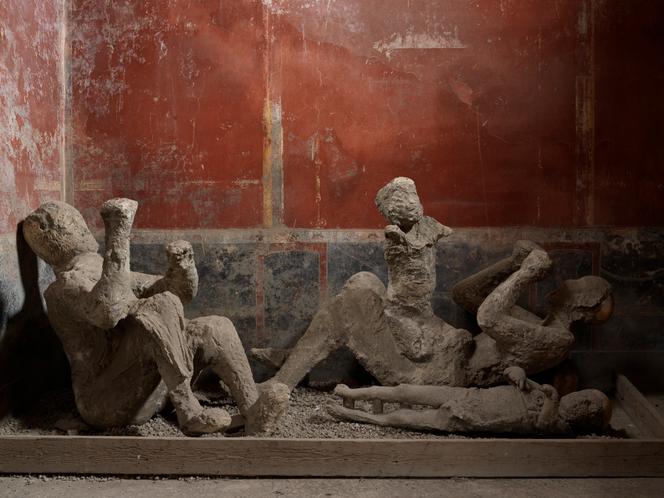


Just like everyone else, scientists are sometimes victims of their own prejudices, or simply of the cultural and historical context in which they work. In the 19th century, when plaster figures of victims from the terrible eruption of Vesuvius in 79 AD appeared in Pompeii, Italy, various interpretations were proposed. In fact, they were engraved in the marble of scientific publications and tourist brochures alike. Hypotheses became truths right up to the present day.
The study carried out by an international team, published on November 7, in Current Biology, challenges the certainties about plaster casts of these people seized by death. What was thought to be a woman holding her child on her lap in those fatal minutes was, in fact, a man, with no genetic relationship to the child. Two figures embraced in death would eventually not be the two sisters we thought they were, nor, alternatively, a mother and daughter, since one of them was a man.
Why did researchers want to defy such moving storytelling? An international team of biologists, anthropologists, geneticists and archaeologists from the University of Florence, Italy and the American universities of Harvard and California succeeded in recovering DNA fragments from the famous Pompeian casts, and they analyzed them.
During the first excavations following the rediscovery of this buried city of Roman antiquity in the 18th century, numerous victims were discovered in houses and even public places. A century later, Italian archaeologist Giuseppe Fiorelli (1823-1896) perfected a method for making casts of victims trapped in a gangue of pyroclastic ash. It involved pouring liquid plaster into the voids left by decomposing soft tissue.
A total of 104 plaster casts preserving the victims' forms and enveloping their bones were produced using Fiorelli's method. When the plaster casts were restored in 2015, an X-ray of 26 of them revealed that none contained a complete skeleton and that the silhouettes of some were rather loosely redrawn.
Elena Pilli, the first signatory of the study, David Reich, Alissa Mittnik and their colleagues managed to work on fragmented bone remains mixed with plaster from 14 casts undergoing restoration. "We generated genome-scale ancient DNA and strontium isotope data to characterize the genetic relationships, sex, ancestry and mobility of five individuals," they said. The genomic data also reveal the presence of immigrants from the eastern Mediterranean, confirming the intermingling of populations at the time of the Roman Empire.
You have 12.12% of this article left to read. The rest is for subscribers only.
